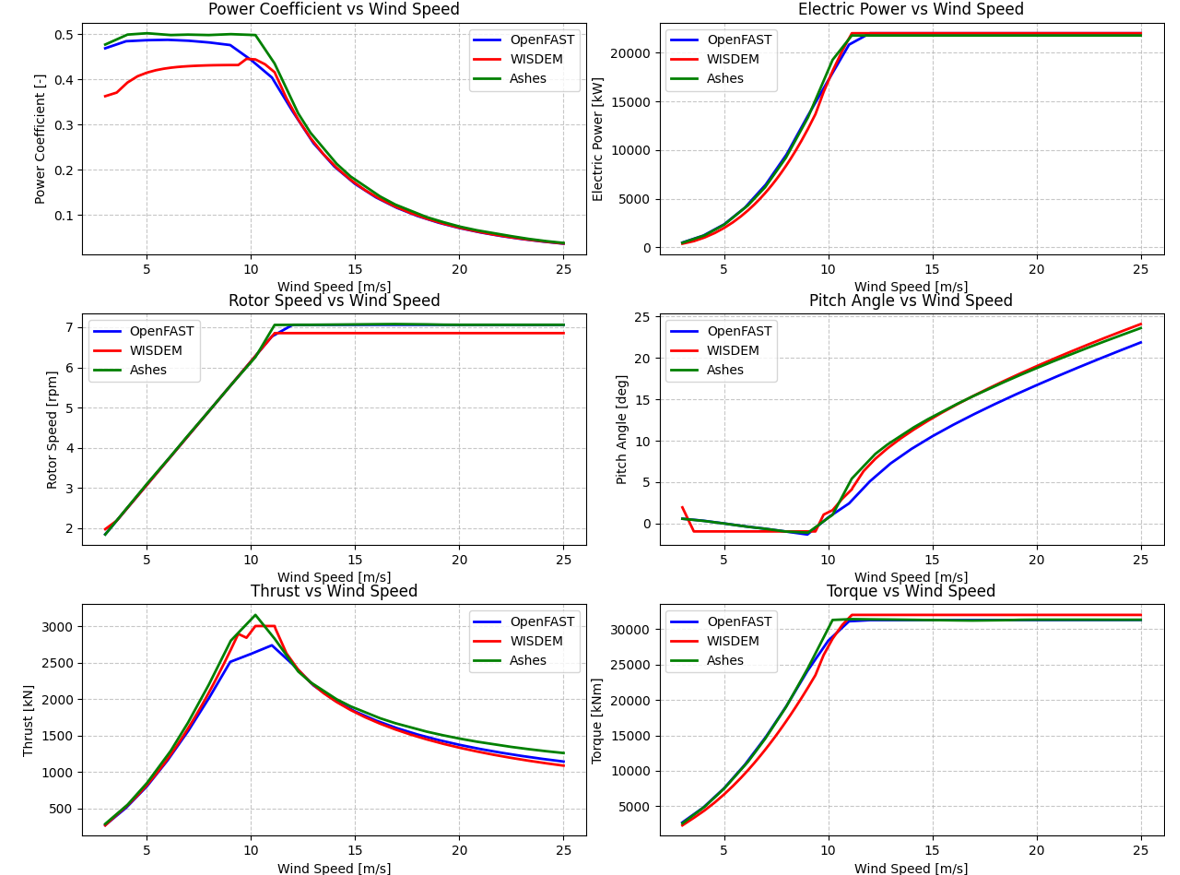IEA 22-MW steady state performance
In this document we compare results produced by Ashes with the IEA 22-MW twind turbine for constant uniform wind speeds ranging from 3 to 25 m.s-1.
1 Model
The model used for the benchmark corresponds to the RNA of the IEA 22-MW reference wind turbine. The document Reference models shows how to generate this model in Ashes. The figure below illustrates the model:
The figure below illustrates the model:
2 Benchmarks
Constant uniform wind speeds ranging from 3 to 25 m.s-1 are used as environmental conditions. Each wind speed corresponds to a load case. For each load case, 300 seconds are run and the value of the RPM, Demanded collective pitch angle, Power coefficient (CP), Thrust and Power (electrical) are extracted. These outputs are part of the Rotor sensor and the Generator sensor.
The results from Ashes are compared to results produced with WISDEM and OpenFAST and available in the GitHub repository at https://github.com/IEAWindSystems/IEA-22-280-RWT/blob/main/Documentation/IEA-22-280-RWT_tabular.xlsx (accessed October 2025).
3 Results
The results produced by Ashes are visually compared to those from WISDEM and OpenFAST. When the results are satisfactory, the data from Ashes is used to run a regression test.
The report with the results from the regression test can be downloaded here:
The comparison between Ashes, WISDEM and OpenFAST is shown in the figure below:

Several comments can be made from this figure:
- The large differences in Cp at low wind speeds between Ashes and OpenFAST on one side and WISDEM on the other appear to be due to differences in the control system, since the pitch angles at low wind speeds are nearly identical for Ashes and OpenFAST. This in turns influences the other output such as Torque, Thrust and electrical power
- The differences between Ashes and OpenFAST at low wind speed are most likely due to different aerodynamics. In particular, Ashes uses the empirical Glauert correction. We could not find what correction was used to produce the OpenFAST results.
- The thrust at rated wind speed appears higher for Ashes than for both other tools. This is believed to be due to the tuning of the peak shaving feature of the ROSCO controller.
A better match with either OpenFAST or WISDEM could be obtained by tuning the ROSCO controller differently. Because the differences between OpenFAST and WISDEM are significant, and because it is not straightforward to select which tool should be matched, this was not attempted here.